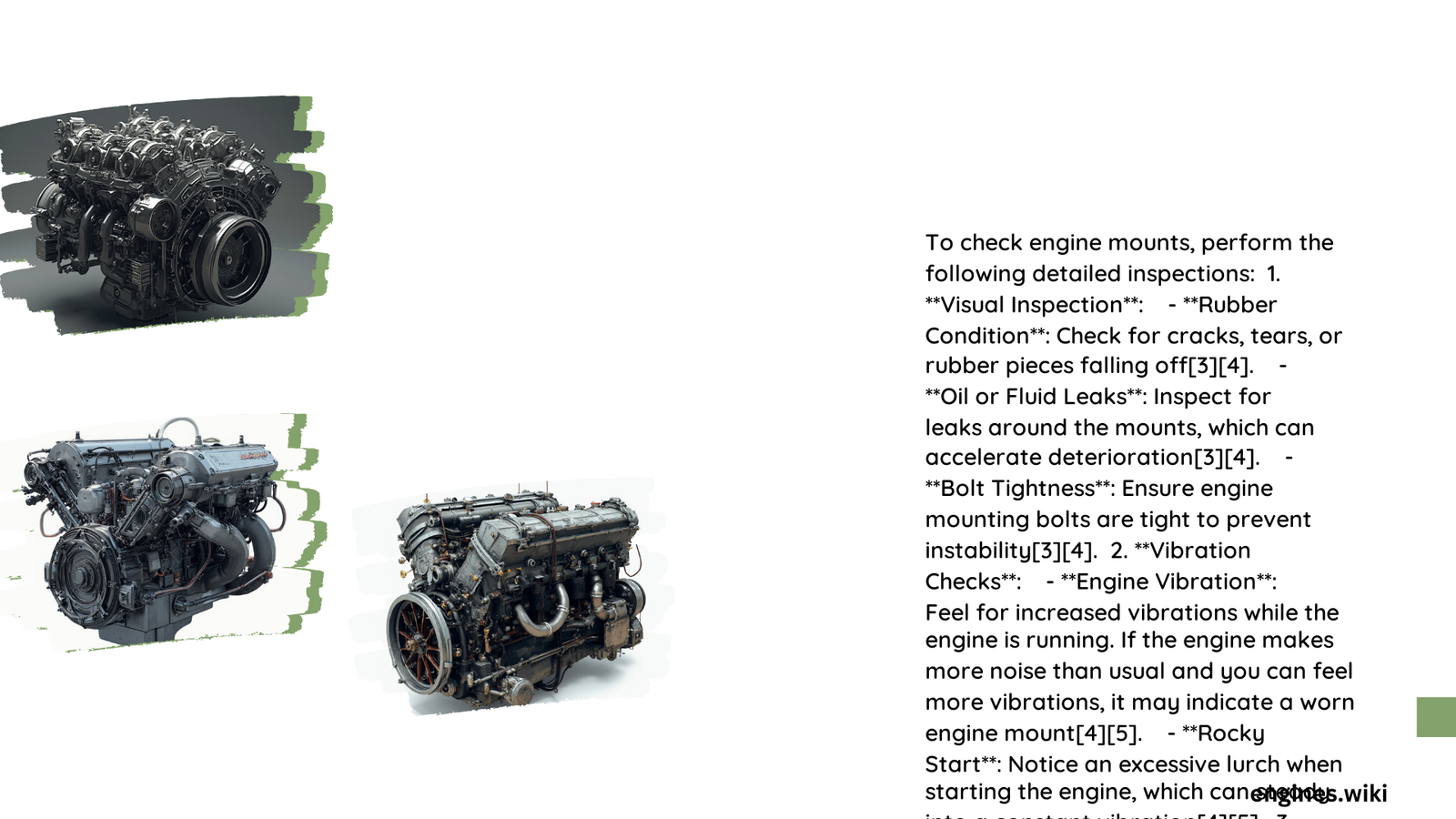Engine mounts are critical components that support and stabilize an engine within a vehicle, absorbing vibrations and preventing excessive movement. Proper inspection and assessment of these mounts can prevent potential mechanical failures, reduce vehicle wear, and ensure optimal performance. This comprehensive guide explores systematic approaches to evaluating engine mount condition through multiple diagnostic methods.
What Visual Signs Indicate Engine Mount Damage?
Visual inspection represents the first and most fundamental check for engine mount health. Mechanics and vehicle owners should systematically examine mounts for several key indicators:
Critical Visual Damage Indicators
- Visible Fractures: Complete or partial breaks in mount structure
- Surface Cracking: Hairline or extensive cracks across mount material
- Rubber Degradation:
- Hardening or brittleness
- Visible material separation
- Excessive compression or deformation
Detailed Visual Assessment Checklist
| Damage Type | Severity Level | Recommended Action |
|---|---|---|
| Minor Cracks | Low | Monitor and schedule replacement |
| Significant Deformation | Medium | Immediate replacement recommended |
| Complete Structural Failure | High | Urgent replacement required |
How Can Performance Tests Reveal Engine Mount Issues?

Performance testing provides quantitative insights into mount functionality beyond visual examination. Key diagnostic procedures include:
Diagnostic Test Methodology
- Static Load Assessment
- Check mount’s resistance to static engine weight
- Verify mounting point stability
-
Measure potential movement under standard load conditions
-
Dynamic Vibration Analysis
- Use specialized vibration measurement equipment
- Record frequency and amplitude of engine vibrations
- Compare readings against manufacturer specifications
What Advanced Diagnostic Techniques Exist?
Specialized Inspection Techniques
- Ultrasonic Testing: Detect internal structural weaknesses
- Thermal Imaging: Identify stress points and potential failure zones
- Torque Alignment Verification: Ensure proper mounting tension
What Challenges Might Technicians Encounter?
Common Inspection Limitations
- Restricted access to mounting points
- Complex vehicle design variations
- Time-intensive diagnostic procedures
- Specialized equipment requirements
What Preventative Maintenance Strategies Work Best?
Proactive Engine Mount Care
- Regular visual inspections every 30,000-50,000 miles
- Address minor wear before complete failure
- Use manufacturer-recommended replacement intervals
- Consider driving conditions and vehicle age
What Are Potential Replacement Cost Considerations?
Cost Breakdown
- Basic Mount Replacement: $200 – $600
- Performance/Specialized Mounts: $500 – $1,200
- Labor Costs: $100 – $300 per mount
Expert Recommendations
Professional mechanics emphasize that comprehensive engine mount checks involve:
– Systematic visual assessment
– Performance testing
– Understanding vehicle-specific characteristics
– Proactive maintenance approach
Pro Tip: Never ignore unusual engine vibrations or mounting noises, as these often indicate imminent mount failure.
Conclusion
Effective engine mount diagnostics require a multi-faceted approach combining visual inspection, performance testing, and advanced technological assessment. Vehicle owners and technicians must remain vigilant and proactive in identifying potential issues before they escalate into significant mechanical problems.
